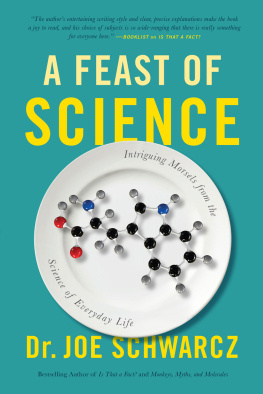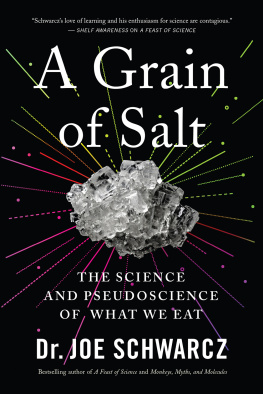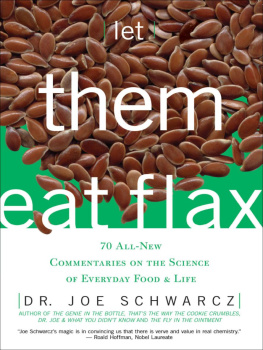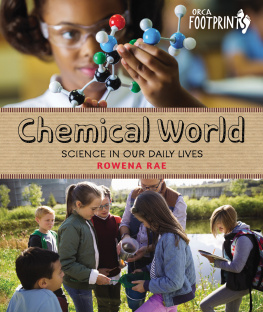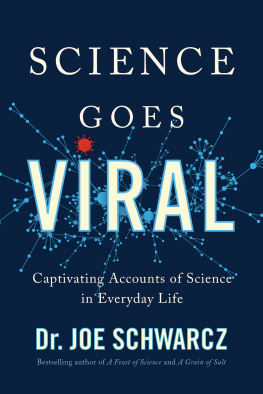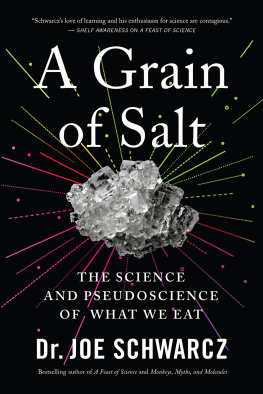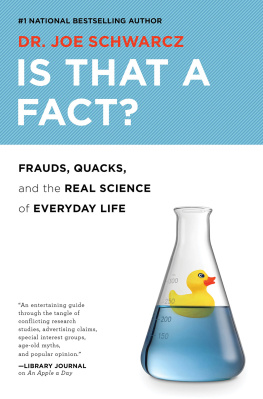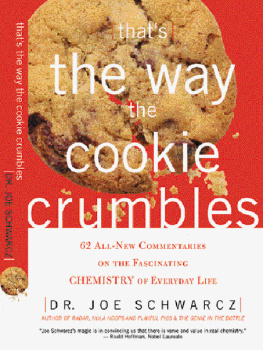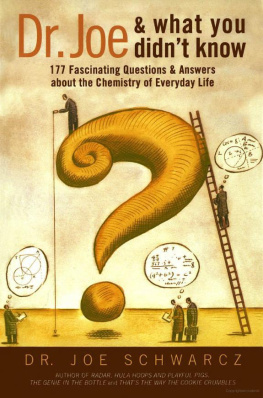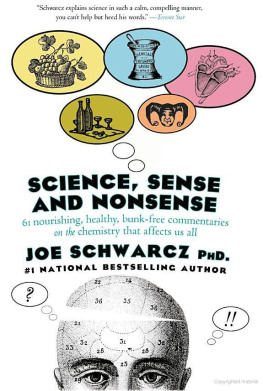I feast on science. I love biting into a juicy piece of research, and I find morsels of science history to be very tasty. Fortunately, these days there is a veritable banquet of succulent science servings available; one just has to know at which table to sit. Unfortunately, sitting down at the wrong one can lead to a science famine instead of a feast. Thats because the Internet and the various forms of social media serve up a steady stream of dishes that are as likely to be filled with toxic misinformation as with delectable science. So, how do we differentiate between the two? It is a question of looking for evidence. That, though, can be quite a challenge.
When we take a medication, we trust that there is evidence that it will work. When we apply a cosmetic, we trust there is evidence that it is safe. When we put on a sunscreen, we trust that there is evidence that it filters ultraviolet light. But evidence is not white or black; it runs the gamut from anecdotal to incontrovertible.
Some people claim that placing a bar of soap under the sheet before they sleep cures restless leg syndrome. Thats what we call anecdotal evidence, and it remains so until it is confirmed or dismissed by proper randomized double-blind controlled trials. On the other hand, evidence that gold conducts electricity is ironclad. There are no ifs or buts about it. Often, though, the use of the term evidence is open to interpretation. An interesting example is a paper published in Nature, one of the worlds foremost scientific journals, intriguingly titled: Evidence for Human Transmission of Amyloid-[Beta] Pathology and Cerebral Amyloid Angiopathy.
Lets dissect this title. Amyloid-beta proteins are one of the hallmarks of Alzheimers disease, so the title implies that evidence has been found that the disease can be transmitted from person to person. Little wonder that the paper generated headlines in the lay press ranging from Alzheimers May Be a Transmissible Infection and You Can Catch Alzheimers to Alzheimers Bombshell. All of these are highly misleading because the paper, in spite of its provocative title, does not provide evidence for the transmission of Alzheimers disease between humans.
So what did the researchers, led by Dr. John Collinge of University College London, actually find? They investigated the brains of eight people who had been injected with human growth hormone as children due to stunted growth back when this hormone was extracted from the pituitary glands of dead donors. Unfortunately, the donors from whom the hormone was extracted had been harboring proteins known as prions that cause Creutzfeldt-Jakob disease, a terminal neurological affliction. The recipients ended up dying from the disease they had contracted via the hormone.
Collinge found that six of the eight people also had amyloid plaques typical of Alzheimers disease. But none of 116 people who had died of Creutzfeldt-Jakob disease and not received contaminated growth hormone showed any sign of amyloid protein deposits. Dr. Collinge therefore suggested that molecules that lead to amyloid plaque formation were passed to the recipients along with the growth hormone.
A very interesting hypothesis to be sure. But the study did not show that the patients would actually have developed Alzheimers had they lived longer, or that the growth hormone was contaminated with molecules that can seed Alzheimers disease. A more appropriate title for the paper would have been Possibility for human transmission of amyloid-beta pathology via contaminated growth hormone. The word evidence, which in this case is at best circumstantial, should not have appeared in the title. The authors do clearly point out that there is no suggestion that Alzheimers disease is a contagious disease and no supportive evidence from epidemiological studies that Alzheimers disease is transmissible. Nevertheless it was the term evidence that caught journalists eyes and created undue public alarm with the suggestion that Alzheimers disease can be caught. The fact is that no such evidence exists.
Those of us who try to be responsible in communicating science and offer advice about its interpretation face a number of challenges. First, we cant offer what the public often yearns for namely, simple solutions to complex problems. Contrary to what the web may churn out, we dont claim that a cancer cure has been found in blue scorpion venom or that people can be protected from the effects of herbicide residues with a homeopathic detox. Neither do we propose to use quartz crystals to create harmony between the body and the soul by opening energy channels through which positive energy can cruise. Furthermore, our accounts are often peppered with ifs, buts, and maybes, along with calls for further research.
Second, we have to cope with the view among much of the public that scientists cant be trusted because they are in the pockets of industry. For example, we have to confront the daftness that natural cancer cures are being hidden by Big Pharma so it can profit from selling its expensive but ineffective drugs. Finally, there is the problem that many scientists, who may indeed be outstanding researchers, are quite inept when it comes to communicating their work to the public, leaving laypeople confused and frustrated. Unfortunately, when this happens, the peddlers of seductive nonsense rush in with their miraculous solutions, sometimes even distracting the desperate from remedies that may actually work.
Recently another challenge has surfaced. Thanks to President Trump, terms such as alternative facts, fake news, hoax, dishonest media, and believe me have entered the political lexicon. The inane concept of alternative facts is easy to dismiss. There are no such things.
Consider Aristotles and Galileos alternative facts about two objects of unequal mass being dropped from a height. Aristotle claimed that the heavier object would fall faster. That became a fact simply because the respected Aristotle said, believe me. This fact was unchallenged until Galileo proposed that the two objects would hit the ground at the same time and proved it by dropping two cannonballs of unequal mass from the Tower of Pisa, or so the story goes. Any doubt about the actual fact was dispelled when astronaut David Scott dropped a hammer and a feather on the moon, demonstrating that when air resistance is eliminated, objects fall at a rate independent of their mass.
Aristotles proposal that babies are formed from menstrual blood was also deemed to be a fact because it meshed with the observation that menstruation ceases at the onset of pregnancy. Of course, a baby is not made from menstrual blood. It is the secretion of human chorionic gonadotropin (HCG) by the placenta that prevents the uterine lining from being shed. Aristotles fact was not a fact at all.
These days, especially when it comes to health matters, the public is often beguiled by alternatives that are presented as facts. Alkaline diets are claimed to treat cancer, vaccines are linked to autism, and aluminum is said to cause Alzheimers disease. These are about as factual as the alternative facts that were dredged up to support President Trumps contention that the crowd at his inauguration was far larger than the one at President Obamas.
What about fake news when it comes to science? It certainly exists. A widely circulating news report about Intelligex, a supposed smart pill, gives the appearance of being on

